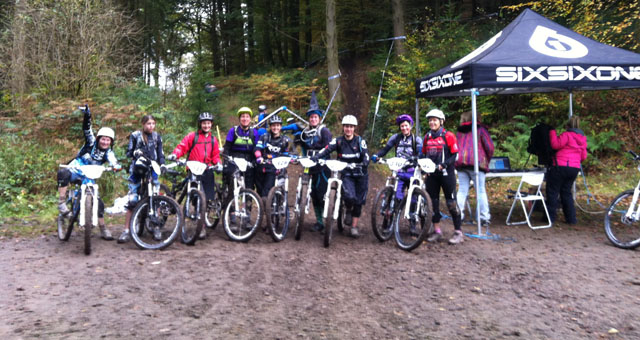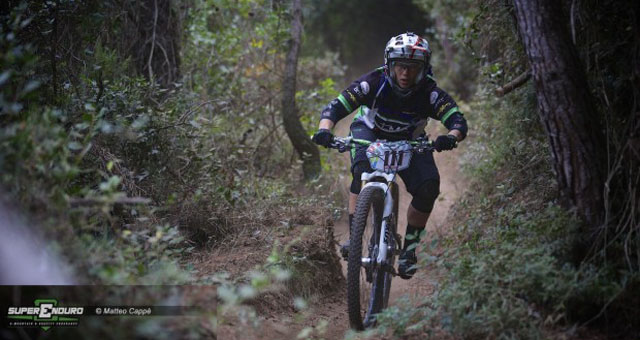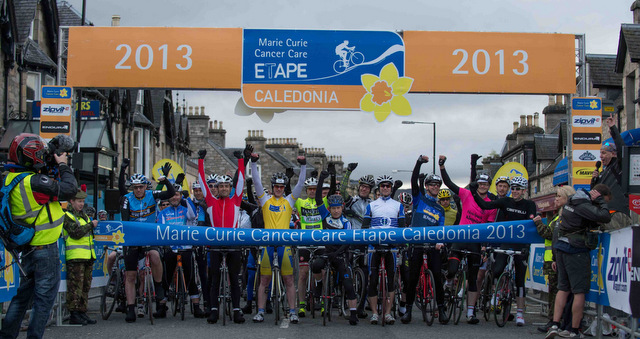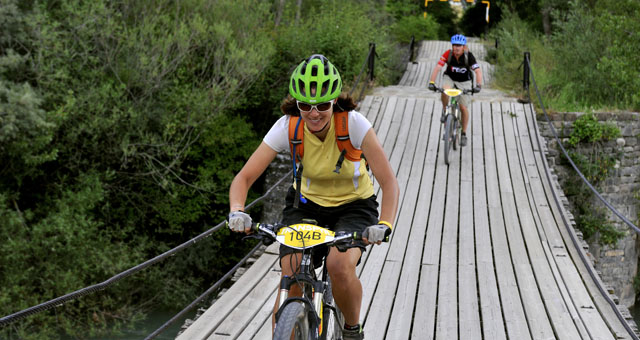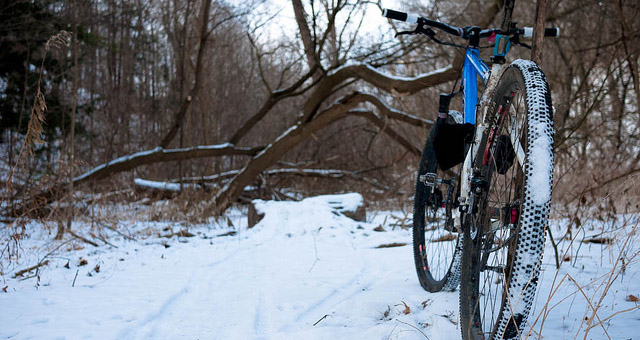Winter can be a grim prospect for cyclists. The short days; the cold, wet weather; the wind, snow and grit… It can be tempting to simply hibernate and wait for spring.
However, across the land, people are unrolling plastic tape in playing fields and woodland, and tearing across the grass on Sunday mornings. It’s official, Cyclo-Cross season has arrived.

Image copyright musumemiyuki on Flickr
Cyclo-Cross – also called ‘cross and CX – started as a way for road riders to keep fit during the winter months, but it’s evolved into a cycling discipline and race type in its own right.
If you’ve never seen it, imagine riding a modified road bike off-road. The races are short but intense, so if you like the idea of riding really hard for a short time, getting muddy, having fun and learning some new skills, ‘cross could be for you.
The Cyclo-Cross racecourse
Cyclo-Cross races take place over a short circuit, usually around a mile long, and the courses can be set up in places like parkland, on school playing fields or on farmland, so they’re all different.
Each course can include a variety of terrain including grass, mud, sand, tarmac and singletrack. Natural and man-made obstacles, like barriers or logs to jump, steps to run up, steep banks to ride up or down are included to test the rider’s technical skills.
Most courses force riders to get off their bikes at least once a lap. Running with the bike is allowed; judging when to ride, and when to push or carry your bike is part of the skill of racing ‘cross. Although the sight of a ‘cross rider running up a muddy slope carrying his or her bike is a stereotypical image of the sport, in reality at least 90% of the course must be rideable according to the rules.
Riders and race categories
Race categories are based on age, not experience. In practice, men outnumber women at ‘cross races, so adult women of all ages race together, often with the ‘veteran’ men (40+). Don’t let the number of men put you off; everyone is very friendly and encouraging!
Larger events may have a separate women’s race, and many events include children’s races too, making for a fun family day out.
What’s actually involved in a Cyclo-Cross race?
Around 30 minutes before the race starts, you’ll be allowed to ride the course once or twice. This gives you a feel for what’s involved, and is also a chance to warm up. Then competitors all line up together at the start and go on the whistle. Everyone goes as fast as possible from the off, so it’s a good idea to warm up before you start.
‘Cross races normally last between forty minutes and an hour. You’ll complete as many laps as you can in this time, and faster riders will lap slower ones. Don’t worry about being lapped; it’s expected, and most experienced riders are polite and friendly. They may even shout encouragement as they ride past!
Basic refreshments are usually available at the venue, and Cyclo-Crossers are sociable types; hang around for a bit after you’ve raced and have a chat. If you go to several events organised by the same club or association, you’ll soon get to know people.
Want to give Cyclo-Cross a try? If you like what you’ve heard, and want to give it a go, here’s some of the most commonly asked questions, plus info on what kit you’ll need. Have fun!

How much experience do I need?
Cyclo-Cross has a reputation for being an excellent introduction to bike racing. The age-based categories mean that newbies and more experienced racers compete together, so you can learn from watching the old hands while battling it out with the people at your level.
You don’t need experience of riding in groups, as there are no real team tactics; it’s so fast and furious, everyone just races for himself or herself.
Do I need specific skills? I’ve never done any MTB riding.
‘Cross riders come from both road and MTB backgrounds. You don’t need gnarly MTB skills to compete in ‘cross, because although the courses are mostly off-road, they’re generally not too technical.
As you do more racing, you’ll find particular skills will help you get round more quickly. Things like dismounting and remounting while the bike is moving are key skills, as are cornering and riding confidently on different surfaces. Knowing how to pick your bike up and carry it over your shoulder is useful too, for example in very deep mud.
This sounds like a lot to learn, but don’t panic; you can practise in the park in between races. Seeing your skills develop from week to week is really satisfying.
Do I need my own bike?
Yes. If you’ve got an MTB, you can ride in most local ‘cross races. If you get the bug, you might want to borrow or buy a specific Cyclo-Cross bike, though.
Although they look similar to road bikes, having a rigid frame and drop handlebars, they also feature a number of elements that make them more suitable for riding off-road. These include knobblier, grippier tyres, disc or cantilever brakes, higher wheel clearance (to accommodate the mud!) and a more upright riding position, amongst others.
What should I wear?
You’ll need MTB-style shoes with a grippy sole, so that you can run in the mud. Close-fitting cycling clothes are best, so that nothing flaps about or gets caught.
As ‘cross is a winter sport, you’ll need to dress for the weather. In the early season, you’ll probably get away with a short-sleeved jersey and shorts. For colder races you’ll need knee warmers or cycling tights and a long-sleeved jersey.
You’ll get hot racing, and there isn’t time to take off clothing while you’re going round, so experiment until you figure out what works for you.
What should I eat and drink?
There’s no time to eat or drink mid-race, so make sure you do this beforehand and afterwards. It may take a bit of trial and error to get eating and drinking right – although ‘cross races are fairly short, the racing is intense and it’s easy to bonk (run out of steam) if you haven’t had enough to fuel your ride.

Is there anything else I need to bring?
Many venues have changing facilities, so you can get out of your muddy kit after your race. It’s also a good idea to bring safety pins (to pin your number on), a pump and a basic toolkit, and a bit of cash to pay your entry fee (and buy a bacon butty from the Girl Guides).
Where can I race?
Find events in your area by searching on the British Cycling website. Then just turn up on the day, sign on and race. As ‘cross gets more popular, other people are organising races too, for example Rapha Super Cross and Morvelo City Cross.
Do I need to be in a club?
Many riders represent a club or team, but you can just turn up and race ‘unattached’. For most British races, you will either need to get a British Cycling provisional licence (this comes free with annual membership of British Cycling) or pay for a day licence when you get to the race, which adds a couple of pounds to the race fee. It’s best to check with the organiser first if you intend to do this.
How can I get some experience before I race?
Many local cycling clubs run informal Cyclo-Cross training sessions; use the British Cycling website to find clubs that are local to you and see if they offer training. Training isn’t essential, though: you can just turn up at a race and have a go. This is the best way of working out what skills you need to practice, ready for next time!
Where can I find out more?
The British Cycling website has introductory information about Cyclo-Cross, and they also have a handy events finder so you can see if there’s a race going on near you.
If you want to find a club to ride with, then again British Cycling have an online searchable database just for this.
YouTube is also a great resource for how-to videos: search for ‘Cyclo-Cross skills’ or ‘Cyclo-Cross technique’. Here’s a nice example by Alan Dorrington (aka @crossjunkie)

